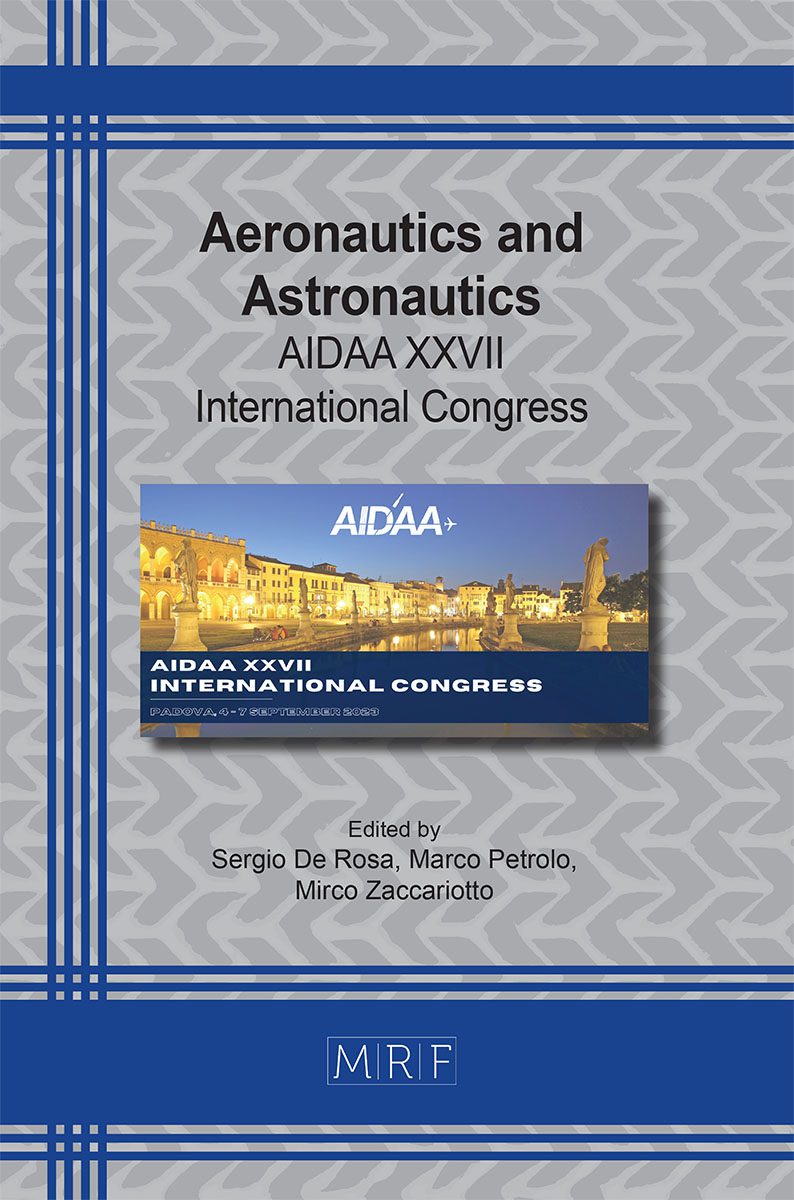An energy-based design approach in the aero-structural optimization of a morphing aileron
Alessandro De Gaspari, Vittorio Cavalieri, Nicola Fonzi
download PDFAbstract. This paper describes the application of an energy-based optimization procedure for the design of a morphing aileron as an alternative to replace a conventional hinged aileron. The design procedure starts with an aerodynamic shape optimization embedding skin structural constraints and energetic information. Different candidate morphing shapes able to provide reduced drag are obtained, and they differ for the required actuation level. The structural design is then performed through a dedicated multi-objective topology and sizing optimization, aimed at obtaining a structural configuration that achieves the target shape with minimum error and minimum actuation force. The energetic comparison between the designed solution and the hinged solution shows that morphing is convenient also from the energy viewpoint. Finally, a fluid-structure interaction simulation assesses the performances of the designed solution.
Keywords
Multi-Objective Optimization, Morphing, Aerodynamic Efficiency, Energy Efficiency
Published online 11/1/2023, 4 pages
Copyright © 2023 by the author(s)
Published under license by Materials Research Forum LLC., Millersville PA, USA
Citation: Alessandro De Gaspari, Vittorio Cavalieri, Nicola Fonzi, An energy-based design approach in the aero-structural optimization of a morphing aileron, Materials Research Proceedings, Vol. 37, pp 337-340, 2023
DOI: https://doi.org/10.21741/9781644902813-74
The article was published as article 74 of the book Aeronautics and Astronautics
![]() Content from this work may be used under the terms of the Creative Commons Attribution 3.0 license. Any further distribution of this work must maintain attribution to the author(s) and the title of the work, journal citation and DOI.
Content from this work may be used under the terms of the Creative Commons Attribution 3.0 license. Any further distribution of this work must maintain attribution to the author(s) and the title of the work, journal citation and DOI.
References
[1] European Commission, Flightpath. 2050-Europe’s vision for aviation: maintaining global leadership and serving society’s needs. Publications Office of the EU, 2012.
[2] H. Monner, M. Kintscher, T. Lorkowski and S. Storm. Design of a smart droop nose as leading edge high lift system for transportation aircrafts. In 50th AIAA/ASME/ASCE/AHS/ASC Structures, Structural Dynamics, and Materials Conference, 2009. https://doi.org/10.2514/6.2009-2128
[3] B.K.S. Woods, O. Bilgen and M.I. Friswell. Wind tunnel testing of the fish bone active camber morphing concept. Journal of Intelligent Material Systems and Structures, 25(7):772–785, 2014. https://doi.org/10.1177/1045389X14521700
[4] T.A. Weisshaar. Morphing aircraft technology – new shapes for aircraft design, 2006.
[5] A. De Gaspari and S. Ricci. Knowledge-based shape optimization of morphing wing for more efficient aircraft. International Journal of Aerospace Engineering, 2015. https://doi.org/10.1155/2015/325724
[6] A. De Gaspari. Study on the actuation aspects for a morphing aileron using an energy–based design approach. In Actuators, volume 11, page 185. MDPI, 2022. https://doi.org/10.3390/act11070185
[7] R. Sanchez, R. Palacios, T.D. Economon, H.L. Kline, J.J. Alonso and F. Palacios. Towards a Fluid-Structure Interaction Solver for Problems with Large Deformations Within the Open-Source SU2 Suite. In 57th AIAA/ASCE/AHS/ASC Structures, Structural Dynamics, and Materials Conference, 2016. https://doi.org/10.2514/6.2016-0205












